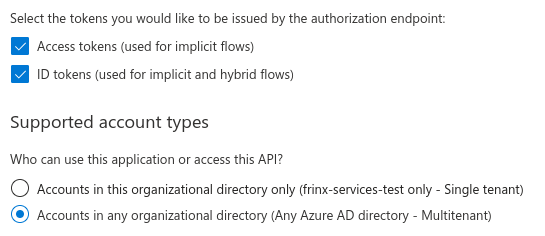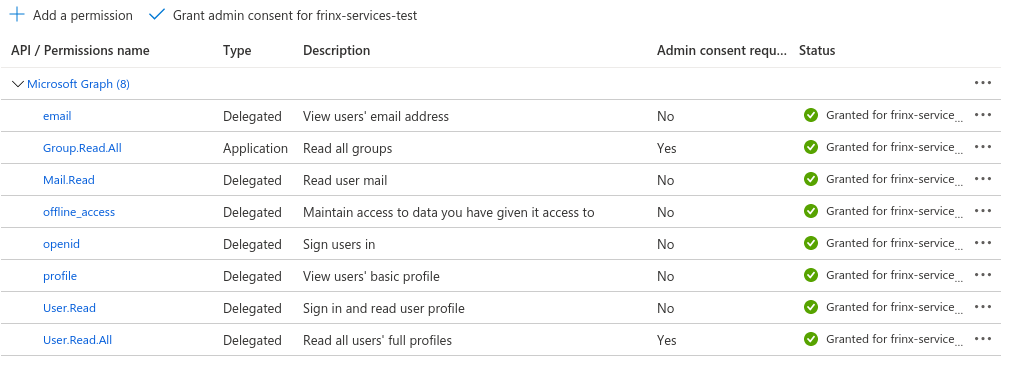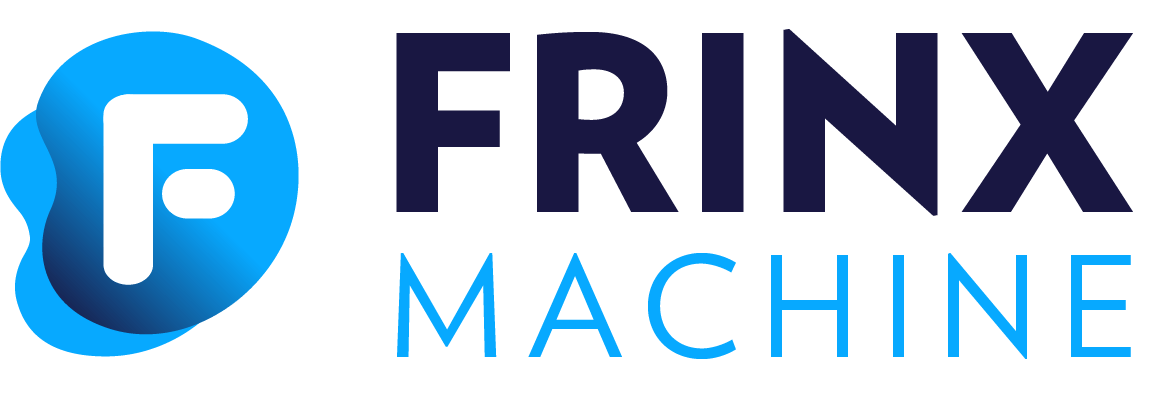#
Frinx Machine with Azure AD
Frinx Machine supports authentification and authorization via Azure AD. The following sections describe how to set up Azure AD for Frinx Machine.
#
Client configuration
Register the application in your Azure AD and configure the following settings.
#
Redirect URIs
Set platform redirect URIs on the Authentication page. The table below shows examples of configuration settings.
Frontent login URI is passed to the installation script azure_ad.sh via --redirect_url flag.
#
Implicit flow and single/multi-tenancy settings
On the same page choose single/multi-tenancy. Based on this setting the parameter --tenant_name is defined in the installation script azure_ad.sh.
For a single-tenant, use Azure AD domain name from AD overview. For multi-tenant use value common.
Enabled implicit flow is optional based on specific requirements.

#
API permissions

#
Client secrets
Generate secret and use it as an input parameter for --client_secret flag in the installation script azure_ad.sh.
This secret is used in KrakenD azure plugin for translating group id to the group name (human-readable format).

#
Token claims configuration

Example of encoded JWT token with claims. These claims are transferred to the request header (see KrakenD Azure Plugin docs for more info).
{
......
"tid": "aaaaaaaa-1234-5678-abcd-abcd12345678",
"name": "FRINX Super Administrator (Test)",
"oid": "d040c2a8-aaaa-bbbb-cccc-f2900fea4f51",
"preferred_username": "frinx-user@yourname.onmicrosoft.com",
"roles": [
"User.ReadWrite"
],
"groups": [
"bbbbbbbb-cccc-1234-5678-abcd12345678"
],
......
}
#
RBAC configuration
Super user is defined in .env file via ADMIN_GROUP variable.
#
Workflow Manager
RBAC proxy adds 2 features on top of tenant proxy:
- Ensures user authorization to access certain endpoints
- Filters workflow definitions and workflow executions based on user's roles, groups and userID
RBAC support simply distinguishes 2 user types: an admin and everyone else. An admin has full access to workflow API while the ordinary user can only:
- Read workflow definitions
- Ordinary users can only view workflow definitions belonging to the same groups
- A workflow definition (created by an admin) can have multiple labels assigned
- A user can belong into multiple groups
- User groups are identified in HTTP request's header field
x-auth-user-roles
- User groups are identified in HTTP request's header field
- If an ordinary user's group matches one of the workflow labels, the workflow becomes visible to the user
- Execute visible workflow definitions
- Monitor running executions
- Only those executed by the user currently logged in
Define user roles in workflow by adding role or group name to description label.
Example: added User.ReadWrite, Role.ReadWrite, Group.ReadWrite labels to workflow description.
{
"name": "Install_all_from_inventory",
"description": "{\"description\": \"Install all devices from device inventory\", \"labels\": [\"User.ReadWrite\", \"Role.ReadWrite\", \"Group.ReadWrite\"]}",
"version": 1,
"tasks": [
......
#
Uniconfig
Super-users (based on their role and user groups) can use all REST APIs. Regular users will only be able to use GET REST API requests.
#
Resource Manager
A simple RBAC model is implemented where only super-users (based on their role and user groups) can manipulate resource types, resource pools and labels. Regular users will only be able to read the above entities, allocate and free resources.
